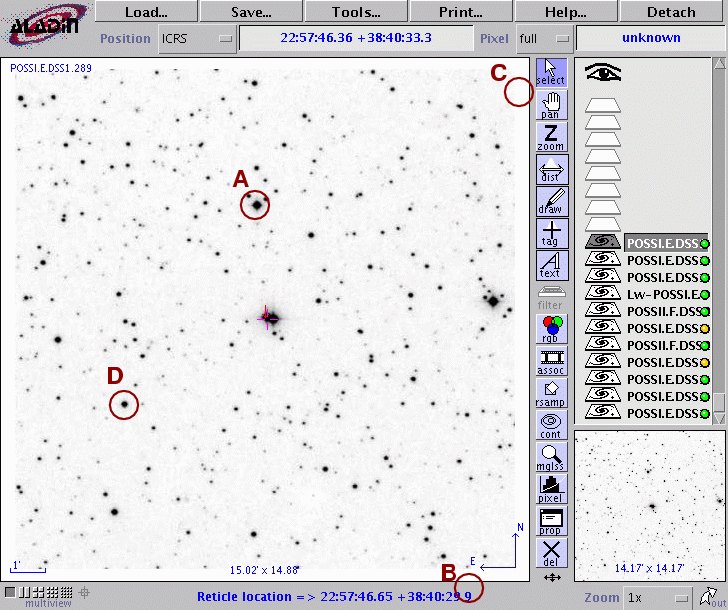
On the night of UT Oct 17, 2007, the SDSS Photometric Telescope ("PT" for short) took a series of exposures of the field around HAT-P1 . We detected the ingress of a transit, which appears to occur LATER than the transitsearch.org ephemeris.
Notes from the night
This is a chart of the field. HAT-P1 orbits the is the bright star indicated by the crosshairs. The labelled stars will appear in later graphs.

The host star of HAT-P1 has a magnitude I=9.56 according to HAT-P-1b: A Large-Radius, Low-Density Exoplanet Transiting one Member of a Stellar Binary.
Following the procedures outlined by Kent Honeycutt's article on inhomogeneous ensemble photometry, I used all stars available in each image to define a reference frame, and measured each star against this frame. You can find the software package used to do the ensemble photometry online; it's free!
Most of the data was taken under a clear sky. The graph below shows the amount by which instrumental magnitudes from each image needed to be shifted to match the ensemble reference. On a clear night, this graph would show a straight horizontal line. Note that the variation in this data is only 0.010 mag -- but over only a short period of about one hour. Beware -- the images immediately after the last shown here were contaminated by clouds.
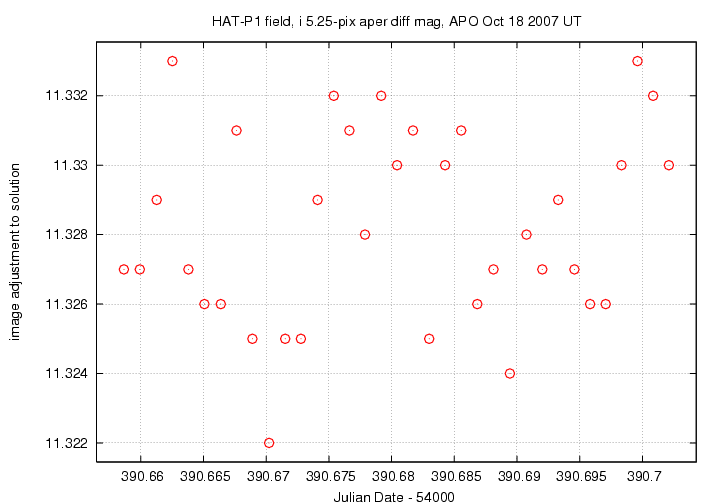
Below is a graph of the scatter in differential magnitude versus magnitude in the ensemble solution. I marked the brightest star in the graph, labelled "B" in the chart above, as "variable", so that they would not influence the ensemble solution.
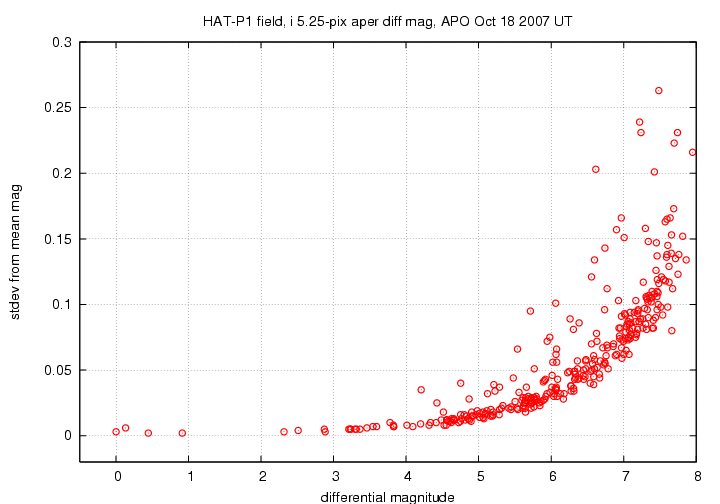
HAT-P1 is the star at differential mag 0.10; it shows a very small excess of scatter than neighboring stars of the same brightness. The "noise floor" in these measurements is about 0.003 mag -- very nice.
Below are the light curves for the target (green symbols) and four comparison stars in the field.
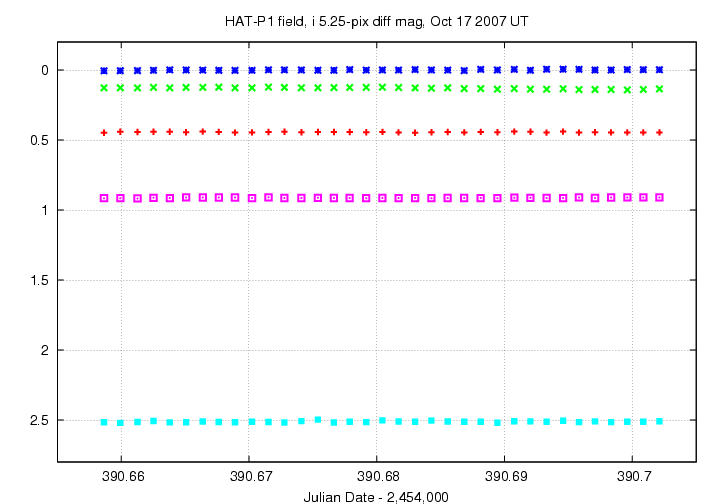
In this closeup, I have shifted the data for star A to move them closer in magnitude to the target.
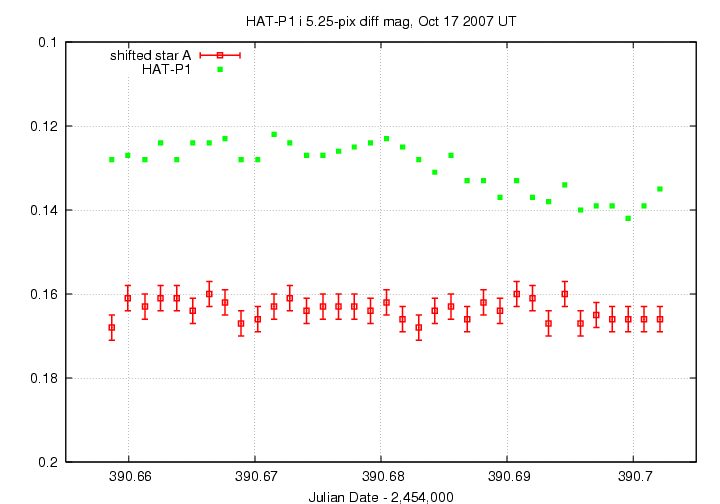
An ephemeris grabbed from transitsearch.org predicts for this night
----------------------------------------------------------------------------------------
Begin Transit Window PREDICTED CENTRAL TRANSIT End Transit Window
All Times UT
HJD Year M D H M
2454390.67 2007 10 17 3 58 2454390.74 2007 10 17 5 43 2454390.81 2007 10 17 7 27
----------------------------------------------------------------------------------------
The ingress of UT 2007 Oct 17 03:58:00 corresponds to JD 2,454,390.665, which is clearly earlier than the observed ingress. I would place the observed ingress at roughly JD 2,454,390.680, about 20 minutes LATER than the prediction.
You can grab the measurements for your own analysis. Below is a table with three flavors of time, plus the differential magnitude of HAT-P1 and an estimate of the uncertainty in each measurement. I show the first few lines of the file to give you an idea of its format.
(This is the first batch of times I've calculated since modifying my procedure, so that it SUBTRACTS half the exposure duration from the time recorded in the FITS header to find the point of mid-exposure)
# Measurements of HAT-P1 made with APO PT, Oct 17, 2007 UT. # Each exposure 25 seconds long in SDSS i-band; # Tabulated times are midexposure (FITS header time - half exposure length) # and accurate only to +/- 1 second (??). # 'mag' is a differential magnitude based on ensemble photometry # using a circular aperture of radius 5.25 arcseconds. # # UT day JD-2,450,000 HJD-2,450,000 mag uncert Oct17.65865 4390.65865 4390.66276 0.128 0.003 Oct17.65992 4390.65992 4390.66403 0.127 0.003 Oct17.66127 4390.66127 4390.66538 0.128 0.003
Last modified 10/16/2007 by MWR.